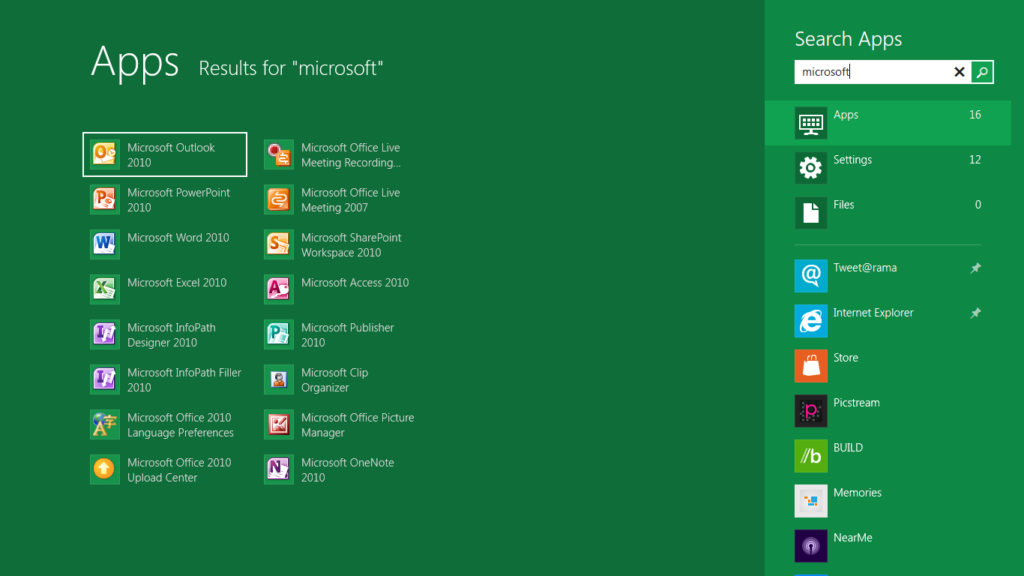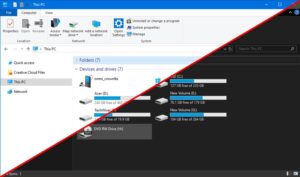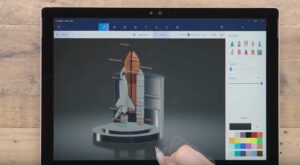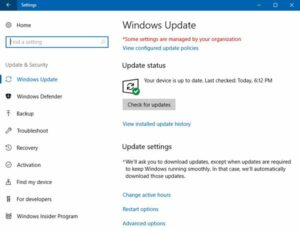Unveiling the Depths: A Comprehensive Exploration of Microsoft’s Detailed Windows 8 Start Screen Search Features

Embarking on a Journey through Enhanced Functionality
In the dynamic landscape of operating systems, Microsoft’s Windows 8 brought forth a paradigm shift in user interaction, most notably with the introduction of the Start Screen. This revolutionary interface not only redefined the visual aesthetics of the Windows operating system but also ushered in a host of search features designed to enhance user productivity. In this extensive exploration, we delve into the intricacies of Microsoft’s detailed Windows 8 Start Screen search features, unraveling the layers of functionality that aimed to streamline the user experience.
1. Live Tiles: A Dynamic Gateway to Information
Transforming Static Icons into Interactive Hubs
At the heart of Windows 8’s Start Screen are Live Tiles, dynamic and interactive icons that transcend the traditional static nature of desktop shortcuts. These Live Tiles serve as more than mere visual cues; they act as information hubs, displaying real-time updates and notifications from relevant apps. Whether it’s the latest news headlines, incoming emails, or social media updates, Live Tiles transform the Start Screen into a dynamic dashboard, providing users with a snapshot of their digital world without the need to open individual apps.
2. Universal Search: Navigating the Digital Realm with Ease
Effortless Exploration Across Apps, Settings, and Files
Windows 8’s Start Screen boasts a powerful universal search feature that empowers users to navigate the vast expanse of their digital realm effortlessly. By simply typing on the Start Screen, users initiate a comprehensive search that spans applications, system settings, and files. The search results are dynamically displayed, offering instant access to relevant apps, documents, and settings. This universal search functionality marks a departure from traditional search paradigms, embracing a holistic approach that aligns with the multifaceted nature of modern computing.
3. App-Specific Search: Precision at Your Fingertips
Targeted Exploration Within Individual Applications
In addition to universal search, Windows 8 introduces app-specific search capabilities, allowing users to delve deeper into the content of individual applications. This granular search functionality enables users to search within apps like Mail, Calendar, and other integrated services, ensuring precision and relevance in retrieving information. Whether scouring through emails, calendar events, or app-specific data, the app-specific search feature adds a layer of depth to the overall search experience, catering to users with diverse needs.
4. Semantic Zoom: A Bird’s-Eye View of Organized Content
Navigating and Organizing with Panoramic Ease
Windows 8 incorporates the innovative Semantic Zoom feature, providing users with a bird’s-eye view of the Start Screen’s expansive layout. By pinching or stretching on a touchscreen device or using the scroll wheel on a traditional mouse, users can zoom in and out of the Start Screen. This panoramic navigation facilitates not only an organized overview of Live Tiles but also an efficient way to group and manage apps. Semantic Zoom emerges as a visually intuitive tool, allowing users to maintain a sense of order and structure within the dynamic tapestry of the Start Screen.
5. Deep Integration with Web Search: Unifying Local and Online Results
Seamless Blend of Local and Web-Based Information
Windows 8’s Start Screen search extends beyond the confines of local data, seamlessly integrating with web search results. The integration of Bing, Microsoft’s search engine, ensures that users receive a unified set of results, combining local files and applications with relevant web-based information. This deep integration propels the Start Screen search into a comprehensive tool for knowledge discovery, bridging the gap between the user’s device and the vast repository of information available on the internet.
6. Charms Bar: A Hub for System-Wide Search Access
Centralized Access to Search Across Applications
The Charms Bar, introduced in Windows 8, serves as a centralized hub for various system-wide functions, including search. By accessing the Charms Bar, users can initiate a search that spans applications, settings, and files. This unified access point simplifies the search process, offering a consistent experience regardless of the context. The Charms Bar’s search functionality becomes a gateway to the wealth of information residing on the device, providing users with quick and convenient access to their digital content.
Conclusion: Elevating the Windows 8 Experience through Search Mastery
In the realm of Windows 8’s Start Screen, the search features stand out as a testament to Microsoft’s commitment to user-centric design. Live Tiles, universal search, app-specific search, Semantic Zoom, web search integration, and the Charms Bar collectively elevate the user experience, transforming the Start Screen into a dynamic and powerful interface. As users embraced the multifaceted functionalities of Windows 8’s search features, they embarked on a journey of exploration, seamlessly navigating the digital landscape with precision and ease.







